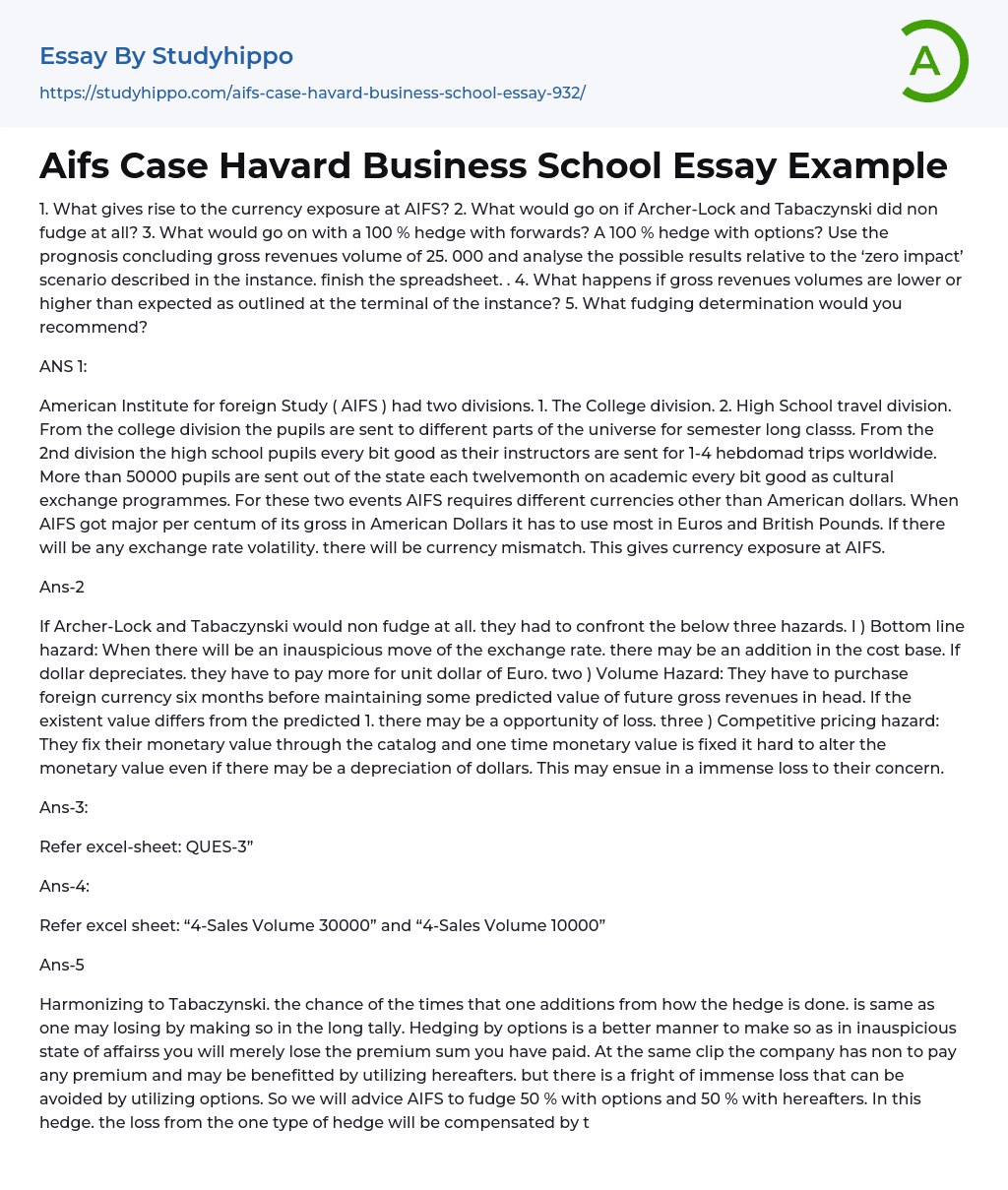The first risk is the exchange rate volatility which could lead to a currency mismatch due to the major percentage of AIFS's revenue being in American dollars, while requiring different currencies, such as Euros and British Pounds, for their academic and cultural exchange programs. The second and third risks involve the potential consequences of not hedging with forwards or options. A 100% hedge with forwards would eliminate currency exposure but may result in missed opportunities for profit if the exchange rate moves favorably, while a 100% hedge with options would provide flexibility to take advantage of favorable exchange rate movements, but also comes at a cost. The prognosis concluding gross sales volume of 25,000 needs to be analyzed along with possible outcomes relative to the "zero impact" scenario outlined in the case. The spreadsheet should be
...completed taking into account what will happen if sales volumes are lower or higher than expected. Based on this analysis, a recommendation should be made regarding what type of hedging decision is most appropriate for AIFS.The hazards associated with AIFS's foreign currency transactions can be categorized into three types. Firstly, the Bottom Line Hazard occurs when there is an unfavorable movement in exchange rates resulting in an increase in the cost base. For instance, if the dollar depreciates, AIFS will have to pay more for each unit of euro. Secondly, the Volume Hazard arises if AIFS purchases foreign currency six months before a predicted value of future gross revenues is set. If the actual value of the currency differs from the predicted value, the company may suffer losses. Finally, the Competitive Pricing Hazard occurs when AIFS fixes its price
through a catalogue, and any fluctuations in currency exchange rates may result in significant losses for the company. To mitigate these risks, it is recommended that AIFS hedge 50% of its transactions using options and 50% using futures contracts. This will ensure that losses incurred from one type of hedge are offset by gains from another.
- Accounting essays
- Marketing essays
- Automation essays
- Business Cycle essays
- Business Model essays
- Business Operations essays
- Business Software essays
- Corporate Social Responsibility essays
- Infrastructure essays
- Logistics essays
- Manufacturing essays
- Multinational Corporation essays
- Richard Branson essays
- Small Business essays
- Cooperative essays
- Family Business essays
- Human Resource Management essays
- Sales essays
- Market essays
- Online Shopping essays
- Selling essays
- Strategy essays
- Management essays
- Franchising essays
- Quality Assurance essays
- Business Intelligence essays
- Corporation essays
- Stock essays
- Shopping Mall essays
- Harvard Business School essays
- Harvard university essays
- Trade Union essays
- Cooperation essays
- News Media essays
- Waste essays
- Andrew Carnegie essays
- Inventory essays
- Customer Relationship Management essays
- Structure essays
- Starting a Business essays
- Accounts Receivable essays
- Auditor's Report essays
- Balance Sheet essays
- Costs essays
- Financial Audit essays
- International Financial Reporting Standards essays
- Tax essays
- Accountability essays
- Cash essays
- Principal essays




